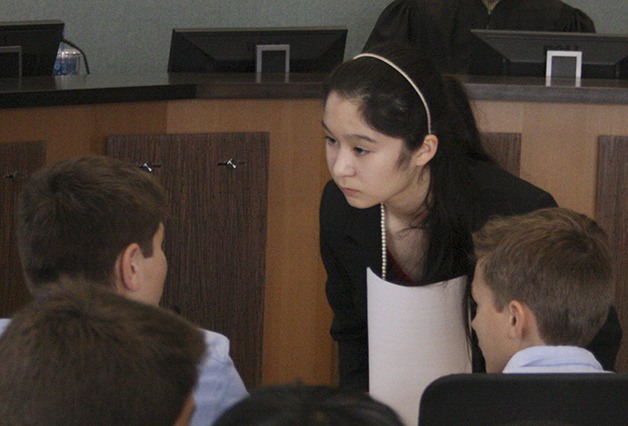It’s June 4 and court is in session at the Bonney Lake Justice Center. A soccer player stands accused of second-degree assault and reckless endangerment.
What’s known is that Taylor Garrison seriously injured Alex Chavez while performing a slide tackle during a game. What’s not known, and has become the crux of the trial, is whether the injury was purposeful. Were his cleats up or down? Prosecutors who reviewed the game footage said the shoe bottoms were up, but the footage was lost. Did Garrison have aggressive feelings toward Chavez? His journal would suggest so, but Garrison claims it was altered without his knowledge.
The competition between the prosecution and defense is tense, and each side quietly celebrates when it wins a small battle. From the judge’s bench, where the honorable Judge Ron Heslop presided over the case, you could see it on their faces. Garrison’s coach slips up in testimony, and the metallic glint of braces show through a half-dozen grins on the right. An objection by the defense is sustained, and the same happens on the left.
This trial is, quite literally, a mockery: or rather, a mock trial.
The prosecutors, defense team, defendant and witnesses are all Lakeridge Middle School seventh graders, students in Darin Mott’s highly capable language arts and social studies class. The June 4 “trial” was the culmination of the class’s unit on the justice system, taught with the assistance of Heslop and City Prosecutor Maili Barber.
Stoic on the bench, Heslop immediately lightened as the jury of adult volunteers left the courtroom for deliberations.
“Let me move on more than we would at trial,” he said. “It involves an understanding of examining and cross examining as it relates to Mr. Garrison. Mr. Garrison is a great liar.”
The room erupts into laughter and applause.
“And that shakes up attorneys,” Heslop continued. He gestured toward the student who had cross-examined Garrison: “You did very well. You kept after him. You were a bulldog. But the thing is, you’re not going to shake him; he’s a liar. So at that point the only thing you can do is show the jury he’s a liar.”
“Can we try him for perjury now?” a member of the prosecution asked.
“You can try, but it won’t work,” Garrison said.
“You all did really well,” Heslop said. “You can walk into our court and watch a trial. And you can see attorneys with seven, eight years of education and five years of trial experience get caught like this and stand and stutter … but you did really well.”
Next, he turned to an attorney on the side of the defense, and told her a number of her objections that had been overruled likely would have been sustained in a real trial, except he had wanted to see where the prosecutor was taking her line of questioning.
“Your objections were awesome,” Barber confirmed. “And the little things you guys did… I couldn’t believe you were listening while I was talking in class. The way you (the prosecutors) submitted (Garrison’s journal for) evidence, I’ve argued cases in court where attorneys didn’t submit evidence that well.”
While everyone waited for deliberations to finish, Heslop and Barber answered students’ various questions about the court. Heslop explained how the judge’s computer allows him to look up individual criminal and traffic records, as well as Washington state laws. He also shared personal anecdotes from his time as a defense attorney, to illustrate how detailed court cases become. For example, he said, one of his clients was found not guilty because the prosecutor had done everything but argue the crime had taken place in the city of Edmonds.
Soon, the jury returned and gave the verdict: Garrison was found not guilty of second-degree assault and guilty of reckless endangerment. Even though, in the fiction of the students’ mock trial world, Garrison may well have committed the crime, justice came down to what the prosecution could prove; just like in the real justice system. And, unlike any other trial, everyone – defendant, witnesses, prosecution and defendant alike – ended the proceedings laughing and talking on the bus ride back to the real world.



